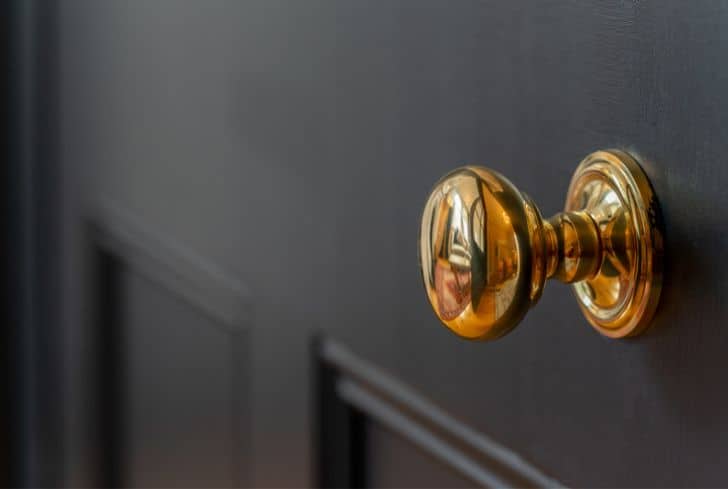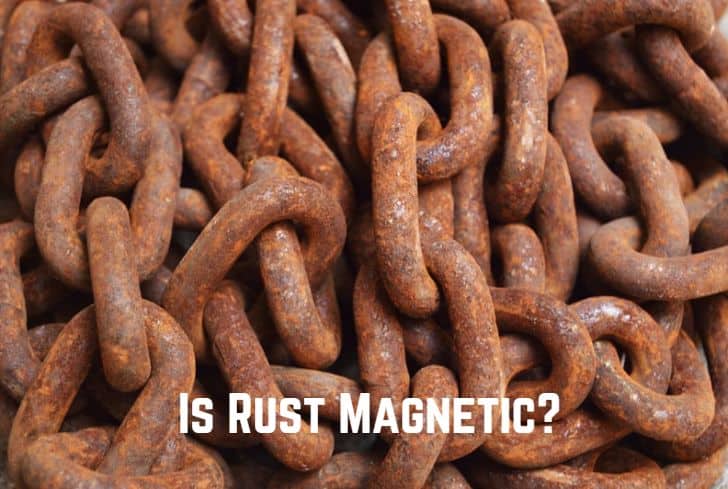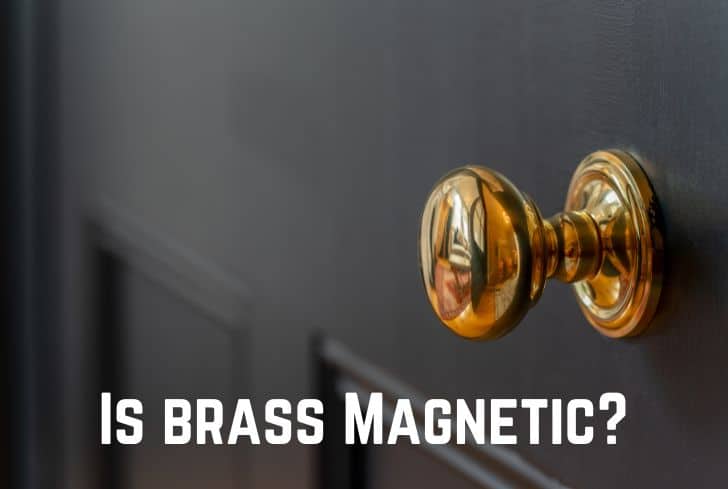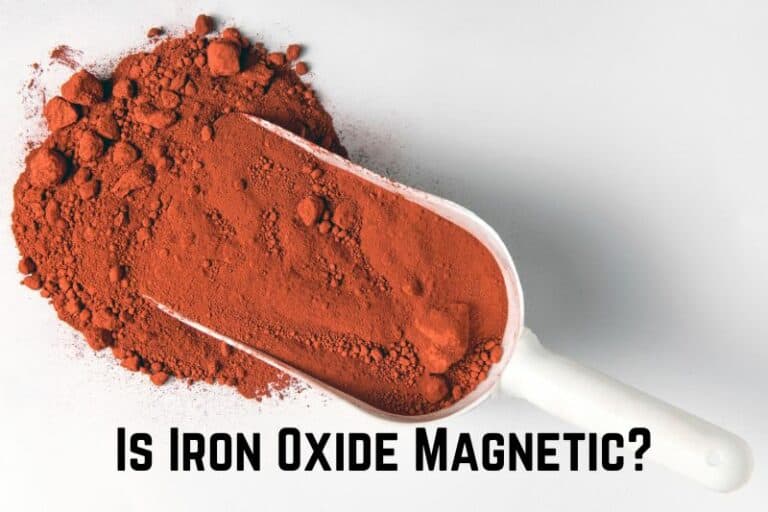Does Brass Conduct Electricity? (Is It Insulator or a Conductor?)

Most individuals now choose brass as their preferred metal when renovating, repairing, or decorating their homes. You can easily mistake brass for gold due to its color. Is brass a good metal, though? After learning more about brass, you will be able to decide. First, let’s find out, does brass conduct electricity?
Along with providing an answer, we also list the variables that influence electrical conductivity. This article’s primary takeaway is whether brass is a better conductor than steel and whether it is an insulator or if it conducts heat. Finally, you’ll learn more about brass’s properties and uses.
Read: Does Titanium Conduct Electricity?
Is Brass Conductive?
As long as 70% of the material is copper, brass is a good electrical conductor. The main components of brass are copper and zinc. It uses copper’s conductivity, the second-best conductor after silver. However, the more zinc is added, the less conductive brass becomes. Brass has a metallic crystal structure that allows electrons to move around freely.
While adding zinc makes the alloy stronger, it also alters how electrons move through the material. The electrical conductivity declines if the flow of electrons is affected.
Factors That Affect the Electrical Conductivity
Electrons, which are electrically charged particles, are present in electrical conductors. These electrons are responsible for a material’s conductivity. The metal’s electrons travel freely when an electric charge is applied, allowing electricity to flow. Metals that restrict electron mobility are poor conductors (insulators). Metals that allow for unrestricted electron flow make excellent conductors.
The following are some of the factors that affect electrical conductivity:
- Crystal arrangement: Conductivity is impacted by electron flow. The number of electrons in a material’s outermost shell varies from material to material. Since most materials only have one, two, or three electrons, the number will impact a material’s conductivity. The materials’ various crystal structures will also impact how electrons move.
- Temperature: The conductivity of a material change when its temperature changes. Most often, as temperature rises, atoms become electrified and may begin to move. Since there won’t be room for electrons to migrate, atomic mobility will largely result in resistance to the flow of electrons. Electrical conductivity decreases as the flow of electrons are restricted.
- Electromagnetic fields: Electromagnetic fields are created when an electric current is transmitted through a conducting material. These external fields produce a magnetoresistance that decreases the current flow.
- Impurities: A conductor’s electrical conductivity decreases when impurities are added to it. The impurities affect the flow of electrons by hindering their movement when conducting electricity.
Why Does Brass Conduct Electricity?
The presence of copper is the primary factor in brass’s excellent electrical conductivity. Copper will greatly influence brass’s conductivity because it is one of the best conductors. Since free electrons can travel about freely in pure copper, electrical flow is increased. But when another metal is added, it usually affects copper’s conductivity.
When added to copper, zinc, a poor conductor, tends to reduce copper’s ability to conduct electricity. Zinc will be added to copper, slowing the passage of electrons there. Even a small amount of zinc will limit the unrestricted passage of electrons through the crystal arrangement.

Is Brass an Insulator or a Conductor?
Brass is a conductor. It will carry electricity even though the copper and zinc content is different. Electrons in zinc and copper can move around, ensuring electricity can pass through. When electron flow is possible even at room temperature, a substance is said to be a good conductor. Because of their stationary electrons, insulators won’t conduct electricity.
Due to the high electrical conductivity of two of its component metals, brass is a conductor by necessity. Another factor distinguishing brass from an insulator is the passage of delocalized electrons from one atom to the next.
Metallic bonding is present in good conductors metals, such as brass. Atoms are continually surrounded by freely moving electrons in metallic bonds. Brass is an electrical conductor due to free electrons that can carry electric current.
Read: Does Diamond Conduct Electricity?
Does Brass Conduct Heat?
Brass is a good conductor of heat because it can move heat quickly. When heat is applied to brass, the electrons begin vibrating, spreading the heat to the other. With 146.87 W/m.K, it has a high thermal conductivity. Brass’s thermal conductivity does not change with temperature. Metals need good thermal conductivity because it gauges how much and quickly a material can lose heat.
Brass has high thermal conductivity, swiftly absorbing heat from hot spots and directing it toward cold spots. High thermal conductivity is a property of the best-conducting metals.
Does Brass Conduct Electricity Better Than Steel?
Due to its composition, brass is a superior conductor to steel. Brass is made up of 70% copper and 30% zinc, whereas steel is made up of 99% iron and 1% carbon. According to a study done by scientists, copper is the second-best metal for conducting electricity. Zinc, a brass alloy, performs better than iron, even though it isn’t as good as copper.
The two metals that make up the bulk of brass are efficient electrical conductors. Brass has better electrical conductivity because its electrons move more freely than iron. Zinc is a better conductor than iron.
Properties of Brass
Brass will probably have qualities from copper and zinc since it mixes the two metals. When zinc and copper are heated, then solidified, brass is formed. Depending on the application, the alloy has a copper content of 55 to 90 percent and zinc content of 10 to 45 percent. Other metals, including lead, nickel, tin, and aluminum, have occasionally been used to enhance the properties of brass.
However, for you to identify brass, here are its properties:
1. Antimicrobial alloy: When pathogens, bacteria, and other microbes come into contact with brass, they cannot survive. Brass has been proven to reduce the spread of antibiotic resistance in bacteria, also known as oligodynamic effect. It is important to ensure the bacterium dies because even after they pass away, it can still reproduce and spread to other bacteria. Brass can destroy bacteria and this crucial DNA. One of the reasons brass is preferred in filtration and purification processes.
2. Variety of colors: The primary color of brass is brilliant golden, though it also comes in other colors. Red, brown, silver, and yellow are more hues. Brass will have a rosy tone if its copper content is higher and a silvery-white tone if its zinc level is higher.
3. Malleable: Brass is more malleable than bronze and zinc. Without breaking, brass can be rolled into thin sheets or hammered. The final product’s zinc content affects how malleable the brass is. However, the zinc content should not be higher than 45% for brass to be usable.
4. Acoustic: Brass, as a material, can respond to sound waves. Additionally, malleable, it is a good material for making musical instruments. For compactness, the instruments require a material that can create small tubes that can be folded or wound.
5. Anti-corrosive: Brass is resistant to corrosion because it contains a lot of copper. Brass is protected from corrosion by a coating of copper that builds around it. Even salt water won’t cause some varieties of brass to corrode.
Uses of Brass
Because of its desirable qualities, brass, a non-ferrous metal, has many applications. Below are some of its many applications.
Read: Does Graphite Conduct Electricity?
Recycling
There is a high demand for the recycling of zinc and copper, creating demand for brass in recycling plants. Brass does not lose any of its chemical and physical properties during recycling. It is also economical and eco-friendly to recycle as using brass is not as energy-intensive as it is for other metals.
Home decorations
Brass can make a variety of decorative objects for homes. There are homes with brass sculptures and ornaments, antique holders, plaques, and nameplates with engravings.
Brass is preferred for door knobs and fittings, lights, fans, and jewelry because of its capacity to combat bacteria.
Building
Brass will be used for architectural purposes because of its durability and strength. It can make trims, faschias, and hedges. Additionally, historical buildings have been renovated or restored using brass alloys. Some construction tools, including builder’s hardware, gear meters, appliance trim, pins, nuts, and screws, are made from brass.
Brass is also used to make common home items, such as taps, windows and door fittings, sprinkler heads, and clock components. Plumbing applications also use brass, including valves and pipe fittings like plugs, couplings, and elbows.
Various switches and plugs also contain brass.
Mechanical components
Brass possesses properties that cause the least friction when metal-to-metal contact is necessary. It is frequently used in machine parts, including locomotive axle boxes, marine engines, and gears. Brass-made hand tools, such as hammers, and flat knives, are the most durable.
Musical instruments
Brass has long been a preferred material for the construction of musical instruments. There are instruments like trumpets, trombones, french horns, and tubes. Brass is used in other instruments, including violins and electric guitars.
Conclusion
Considering that it can borrow properties from the two main metal components, brass as an alloy has several interesting characteristics. The degree of conductivity will vary depending on whether copper or zinc is present in higher concentrations. The rate of electrical and thermal conduction increases with copper concentration.






